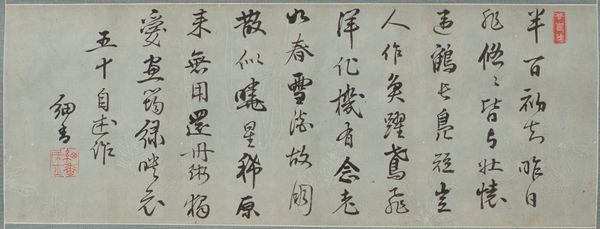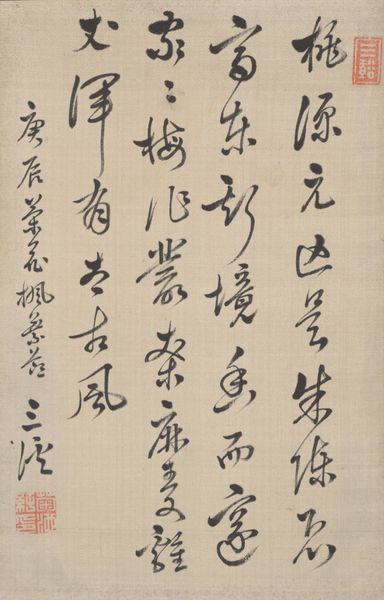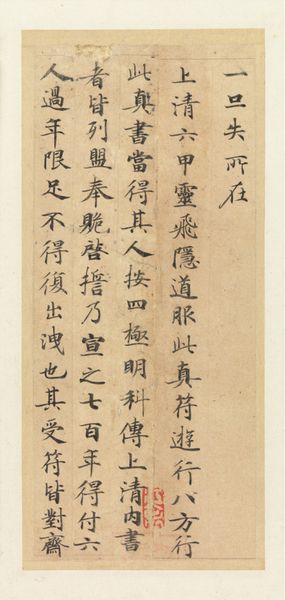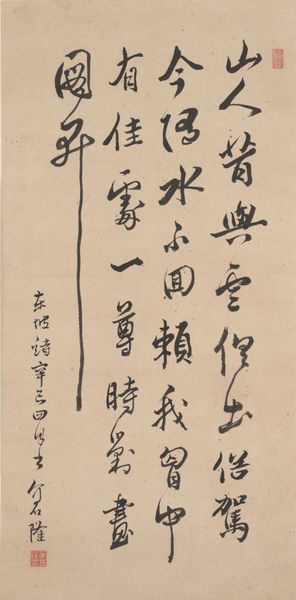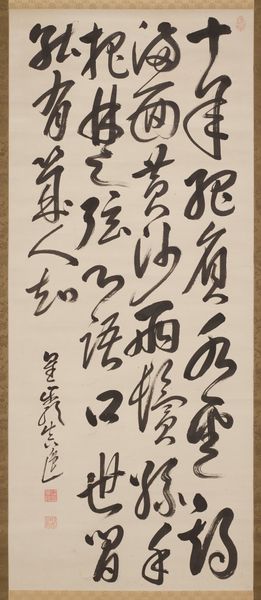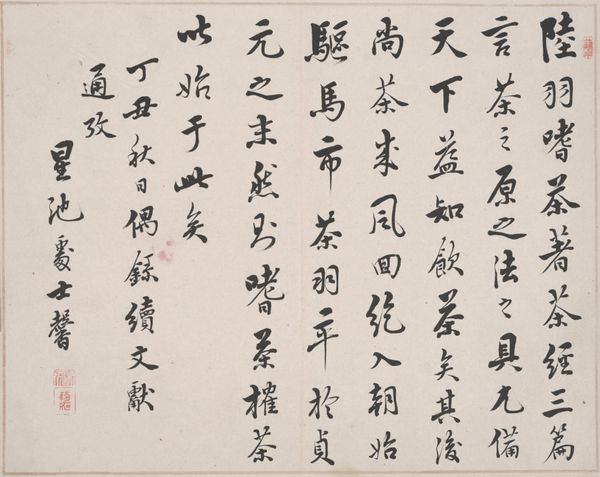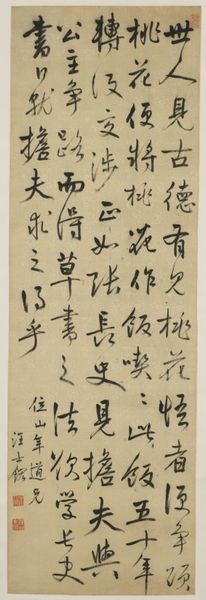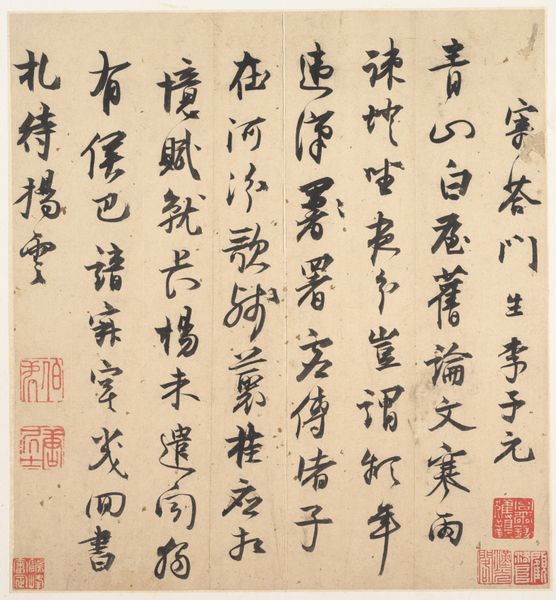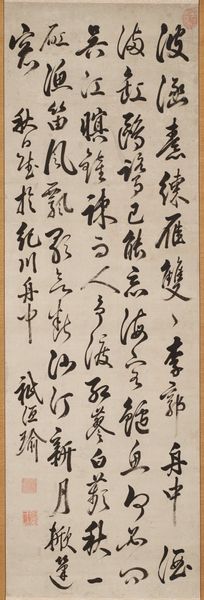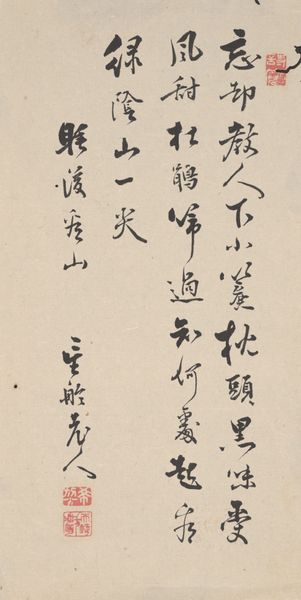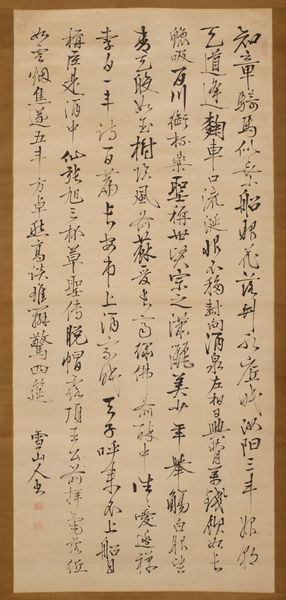
paper, ink-on-paper, ink
#
calligraphy
#
asian-art
#
paper
#
form
#
ink-on-paper
#
ink
#
china
#
line
#
calligraphy
Dimensions: 62 7/8 x 25 1/16 in. (159.7 x 63.66 cm) (image)
Copyright: Public Domain
Editor: Here we have "Running Script Calligraphy," created in the 17th or 18th century, author unknown. It's ink on paper, and it’s just mesmerizing to look at, how the strokes flow together. What do you see in this piece, from your perspective? Curator: Considering its materiality, this calligraphy reduces language to the sheer physicality of ink and paper. Look closely. Do you see the subtle variations in ink density? The speed and pressure of the brushstrokes speak volumes about the maker's skill and the conditions of its production. Editor: So, it’s less about the *meaning* of the words, and more about the labor and process behind their creation? Curator: Precisely! Consider the paper itself – its source, its preparation, its cost. It signifies the resources, labor and trade networks needed. And the ink, of course – grinding it, achieving the right consistency. Each step is a conscious act, a dialogue between the calligrapher and their materials. How do these considerations affect your experience with it? Editor: I hadn't thought about the economic aspect of making this kind of artwork. It makes me wonder, how did this process democratize over time as materials become more accessible? Curator: Exactly the sort of questions we need to ask. Its existence pushes us to look beyond aesthetics to understand the larger systems at play. This kind of artwork reflects cultural values through material and methods. Editor: It really opens up a whole new level of appreciation to consider. It definitely goes beyond just appreciating the visual form of calligraphy. Curator: Agreed. Examining the materials helps us see beyond just form, pushing to deeper contexts and significance.
Comments
No comments
Be the first to comment and join the conversation on the ultimate creative platform.
